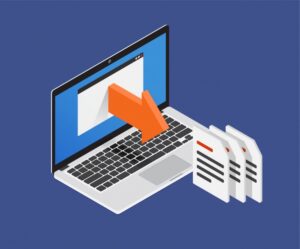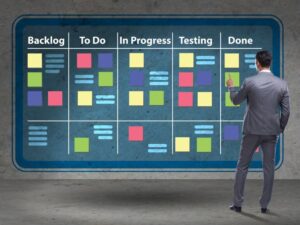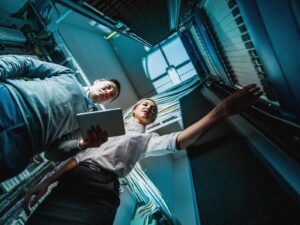PwC is beta testing a new way to track employees indoors at work to reduce the risk of COVID-19 spreading through the workplace. The tool is being tried out in its Shanghai, China office.
PwC is betting that employers are the best choice for rolling out contact tracing at scale. The company’s new Automatic Contact Tracing service uses indoor geolocation to monitor the time and proximity of employee interactions at work.
Rob Mesirow, the principal for IoT services at PwC, said that he started researching contact tracing last month in response to the coronavirus along with his team that includes two epidemiologists and one epidemiologist/data scientist.
“I talked to a client who had a team of people that took 13 hours to do one trace,” he said. “People are having heart-wrenching conversations with people who are sick—it’s a horrible process.”
SEE: Coronavirus: Critical IT policies and tools every business needs (TechRepublic Premium)
PwC repurposed existing intellectual property initially used to track assets within a building. The service monitors ambient signals—the constant background field of 2.4- and 5-gigahertz radio signals—in an office environment to understand how and when employees interact. The technology decodes the signals and analyzes how these signals interact.
The goal for this enterprise-level contact tracing is to make it easier for human resources departments to conduct contact tracing and use the information to reduce the risk of coronavirus cases spreading within a company.
“What companies are struggling with is how to put the controls in place to provide employees with some degree of confidence to come back to the office,” he said.
PwC is beta testing the platform in its Shanghai, China office now and plans to roll out a commercial version of the product in May. While enterprise-level contact tracing will help corporations keep their own employees healthy, this service also will help cities flatten the curve.
“If companies can pull sick people out quickly, they won’t be walking around infecting other people,” he said. “We expect a lot of adoption among our clients among the Fortune 500 and 1000, which represents about 35 million workers in densely populated urban environments.”
How the coronavirus contact tracing tool works
Employers can add the code for the contact tracing to an existing corporate app or have employees download a new app especially for this purpose.
To enable contact tracing, an employee downloads or updates the corporate app, enters a company email address, and consents to the data policy. The service runs in the background and records the time one employee interacts with another as well as the proximity of the other person.
If an employee reports a suspected or confirmed case of the coronavirus, the human resources department would use a dashboard to identify other employees the individual has come in contact with recently.
“The HR person asks some gating questions about symptoms and testing to verify someone is ill before doing the trace,” Mesirow said.
If the individual has a confirmed case of COVID-19, the HR representative enters the person’s email address in the tracing system and gets a list of contacts during a specified time frame. The system ranks each contact’s risk level—high, medium, or low—based on his or her proximity to the person with the virus.
“If we know two people were on the same floor but separated by several offices, the risk is low,” he said.
Mesirow said this extra layer of information allows HR departments to customize advice to employees and protect privacy at the same time.
“Enterprises have a lot of the command and control structures in place to handle sensitive information as well as HR professionals who take their jobs seriously,” he said.
Mesirow said the service uses geofencing to limit tracing to corporate offices only.
“Your risk factor is a calculation of distance and time, not location,” he said.
Planning the return to work
Based on dozens of calls with clients and his team’s work in developing the contact tracking service, Mesirow said that his framework for returning to in-person office operations includes three components:
- Monitor: This could include a daily report on health status and working conditions in the form of an app when an employee is working at home or temperature checks at the entrance of an office building when offices reopen.
- Educate: This uses technology to support social distancing, such as monitoring and managing activity on office floors to direct people to low occupancy spaces or tracking which high-use areas need additional cleaning.
- Protect: This is where contact tracing comes in as a way to build trust among employees that employers are taking steps to help people who are sick and protect the health of workers overall.
This story was updated on April 30, 2020.
Also see
” data-credit=”Image: PwC” rel=”noopener noreferrer nofollow”>

PwC is beta testing a new enterprise-level contact tracking service that allows companies to reduce the risk of coronavirus cases among employees.
Image: PwC
Source of Article




